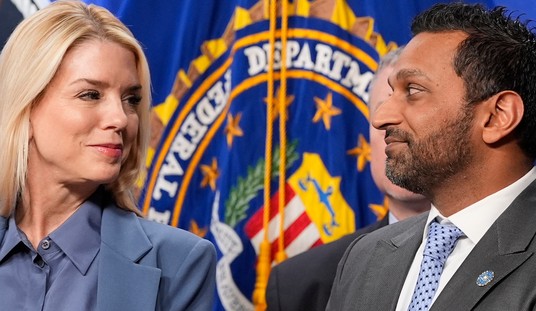
Arizona National Guard

In response to the Indian wars, the Arizona Army National Guard was formed on September 2, 1865. In 1898, hundreds of Arizonans joined the ranks of the Rough Riders during the Spanish–American War. The Militia Act of 1903 organized the various state militias into the present National Guard system. Since then, the Arizona Army National Guard has been deployed to Korea, Vietnam, Iraq, and Afghanistan. Units from Arizona also deployed to Louisiana to assist with the Hurricane Katrina aftermath.
The 158th Infantry Regiment was created September 2, 1865, as the First Arizona Volunteer Infantry. Subsequent to Pancho Villa’s murder of American civilians and soldiers in Columbus, New Mexico in 1916, the 1st Arizona Infantry was activated and headquartered at Camp Naco, Arizona and assigned border protection duties. The regiment was drafted into Federal Service for World War I, 5 August 1917 as part of the 40th Infantry Division. Reorganization after the 1st World War assigned the 158th Infantry to the 45th Infantry Division. On 16 September 1940, the declaration of the National Emergency, the 158th Infantry joined its parent organization, the 45th Division at Fort Sill, Oklahoma. After being relieved by divisions in campaign after campaign across the Pacific, the 158th Infantry was selected to spearhead the final invasion of Japan.
Units from Arizona were called into action on September 26, 1940. The 158th Regimental Combat Team were given the name the “Bushmasters,” named after the deadly Bushmaster snake in Panama. General Douglas MacArthur said that, “No greater fighting combat team has ever deployed for battle”. The Arizona National Guard has served the State through the Arizona Project ChalleNGe program. Since 1993 AZ Project ChalleNGe has offered an in-residence, voluntary, academy-style educational program for high school dropouts who wish to return to their educational goals.
The Battle of Gettysburg
This weekend was the 154 anniversary of the Battle of Gettysburg, fought between the United States Army of the Potomac under General George Meade and the Confederate States of America Army of Northern Virginia under General Robert E. Lee.
The battle that turned the Civil War was won by volunteers as well as professional soldiers. This week marks the 154th anniversary of the Battle of Gettysburg, which was fought on July 1–3, 1863. On this venerable occasion, it is important to recognize that selflessness and devotion to the preservation of the Union was displayed not only by professional soldiers but by volunteers.But for their willingness to heed Lincoln’s call, we would not be the nation we are today.
Pickett’s Charge was the culmination of the Battle of Gettysburg. Taking place on July 3, 1863, the third and final day of battle, it involved an infantry assault of approximately 15,000 Confederate soldiers against Union Major General George Meade’s troops’ position along Cemetery Ridge, manned by some 6,500 Federals. The assault would take the nine brigades of Confederate soldiers over three-quarter mile of open ground susceptible to cannon fire the entire time. The ill-fated assault resulted in over 6,000 Confederate casualties and marked the end of the battle of Gettysburg as well as Lee’s last invasion of the north.

The Confederate brigades, disordered by terrain and the shift to fill the gap, torn by Minie balls and canister, broke and retreated. At one point in the Union line the stone wall formed an angle. The position was defended by the Philadelphia Brigade under Brig. Gen. Alexander Webb. Here, Pickett’s reserve brigade, under Brig. Gen. Lewis Armistead, penetrated the Federal line, but they were too few to withstand the counterattack as more Union regiments rushed to the threatened point. Armistead fell mortally wounded; desperate hand-to-hand fighting ensued around the Angle. Every Southern soldier who did not flee was killed or captured. This moment would become known as the High Tide of the Confederacy.
No assault rifles, no machine guns, no cluster bombs or Predator drones…just several thousand men killing each other with muskets and cannon loaded from the muzzle. There were over 51,000 casualties between both armies over the three days of the battle. Regardless of your “wokeness” and your feelings about the righteousness of the War, you have to acknowledge that it took cojones the size of grapefruits to cross the one half mile of open field into that hellstorm of fire.
Four score and seven years ago our fathers brought forth on this continent, a new nation, conceived in Liberty, and dedicated to the proposition that all men are created equal.
Now we are engaged in a great civil war, testing whether that nation, or any nation so conceived and so dedicated, can long endure. We are met on a great battle-field of that war. We have come to dedicate a portion of that field, as a final resting place for those who here gave their lives that that nation might live. It is altogether fitting and proper that we should do this.
But, in a larger sense, we can not dedicate — we can not consecrate — we can not hallow — this ground. The brave men, living and dead, who struggled here, have consecrated it, far above our poor power to add or detract. The world will little note, nor long remember what we say here, but it can never forget what they did here. It is for us the living, rather, to be dedicated here to the unfinished work which they who fought here have thus far so nobly advanced. It is rather for us to be here dedicated to the great task remaining before us — that from these honored dead we take increased devotion to that cause for which they gave the last full measure of devotion — that we here highly resolve that these dead shall not have died in vain — that this nation, under God, shall have a new birth of freedom — and that government of the people, by the people, for the people, shall not perish from the earth.
Lincoln didn’t make the distinction between friend or foe in the Address; rather, he spoke of the “brave men, living and dead…they gave the last full measure of devotion.” To him, they were all Americans, parts of the same Whole, with Liberty and Justice for all.
Perhaps, we should consider the relevance of that, as we enjoy the 4th and the open thread…













Join the conversation as a VIP Member